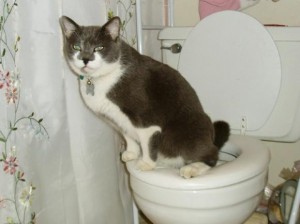Don't Flush Cat Poop Down Your Toilet - Maintain Your Home's Pipe System
Don't Flush Cat Poop Down Your Toilet - Maintain Your Home's Pipe System
Blog Article
They are making a few great annotation on the subject of Can You Flush Cat Poop Down The Toilet? in general in this post down the page.

Introduction
As feline owners, it's vital to bear in mind just how we throw away our feline close friends' waste. While it might seem hassle-free to flush pet cat poop down the commode, this method can have damaging consequences for both the environment and human health and wellness.
Alternatives to Flushing
Thankfully, there are safer and more accountable means to throw away pet cat poop. Take into consideration the adhering to choices:
1. Scoop and Dispose in Trash
One of the most typical technique of dealing with feline poop is to scoop it into an eco-friendly bag and throw it in the garbage. Be sure to use a dedicated trash inside story and get rid of the waste promptly.
2. Use Biodegradable Litter
Go with eco-friendly cat trash made from products such as corn or wheat. These trashes are environmentally friendly and can be securely gotten rid of in the garbage.
3. Bury in the Yard
If you have a lawn, think about burying pet cat waste in a designated location away from vegetable gardens and water sources. Make certain to dig deep adequate to stop contamination of groundwater.
4. Install a Pet Waste Disposal System
Invest in a family pet waste disposal system particularly developed for cat waste. These systems make use of enzymes to break down the waste, reducing odor and ecological impact.
Health Risks
In addition to environmental issues, purging feline waste can also present health and wellness dangers to human beings. Pet cat feces might contain Toxoplasma gondii, a bloodsucker that can cause toxoplasmosis-- a potentially extreme health problem, especially for expectant women and individuals with damaged body immune systems.
Environmental Impact
Flushing cat poop presents hazardous microorganisms and parasites right into the water supply, posing a considerable danger to marine environments. These pollutants can negatively affect marine life and compromise water quality.
Conclusion
Liable pet ownership expands past providing food and sanctuary-- it also entails correct waste management. By refraining from flushing cat poop down the toilet and selecting different disposal methods, we can minimize our ecological impact and shield human health and wellness.
Why Can’t I Flush Cat Poop?
It Spreads a Parasite
Cats are frequently infected with a parasite called toxoplasma gondii. The parasite causes an infection called toxoplasmosis. It is usually harmless to cats. The parasite only uses cat poop as a host for its eggs. Otherwise, the cat’s immune system usually keeps the infection at low enough levels to maintain its own health. But it does not stop the develop of eggs. These eggs are tiny and surprisingly tough. They may survive for a year before they begin to grow. But that’s the problem.
Our wastewater system is not designed to deal with toxoplasmosis eggs. Instead, most eggs will flush from your toilet into sewers and wastewater management plants. After the sewage is treated for many other harmful things in it, it is typically released into local rivers, lakes, or oceans. Here, the toxoplasmosis eggs can find new hosts, including starfish, crabs, otters, and many other wildlife. For many, this is a significant risk to their health. Toxoplasmosis can also end up infecting water sources that are important for agriculture, which means our deer, pigs, and sheep can get infected too.
Is There Risk to Humans?
There can be a risk to human life from flushing cat poop down the toilet. If you do so, the parasites from your cat’s poop can end up in shellfish, game animals, or livestock. If this meat is then served raw or undercooked, the people who eat it can get sick.
In fact, according to the CDC, 40 million people in the United States are infected with toxoplasma gondii. They get it from exposure to infected seafood, or from some kind of cat poop contamination, like drinking from a stream that is contaminated or touching anything that has come into contact with cat poop. That includes just cleaning a cat litter box.
Most people who get infected with these parasites will not develop any symptoms. However, for pregnant women or for those with compromised immune systems, the parasite can cause severe health problems.
How to Handle Cat Poop
The best way to handle cat poop is actually to clean the box more often. The eggs that the parasite sheds will not become active until one to five days after the cat poops. That means that if you clean daily, you’re much less likely to come into direct contact with infectious eggs.
That said, always dispose of cat poop in the garbage and not down the toilet. Wash your hands before and after you clean the litter box, and bring the bag of poop right outside to your garbage bins.
https://trenchlesssolutionsusa.com/why-cant-i-flush-cat-poop/

I ran across that review on How to Dispose of Cat Poop and Litter Without Plastic Bags while doing a search on the web. Sharing is good. One never knows, you may just be doing someone a favor. I praise you for your time. Come back soon.
Schedule Now! Report this page